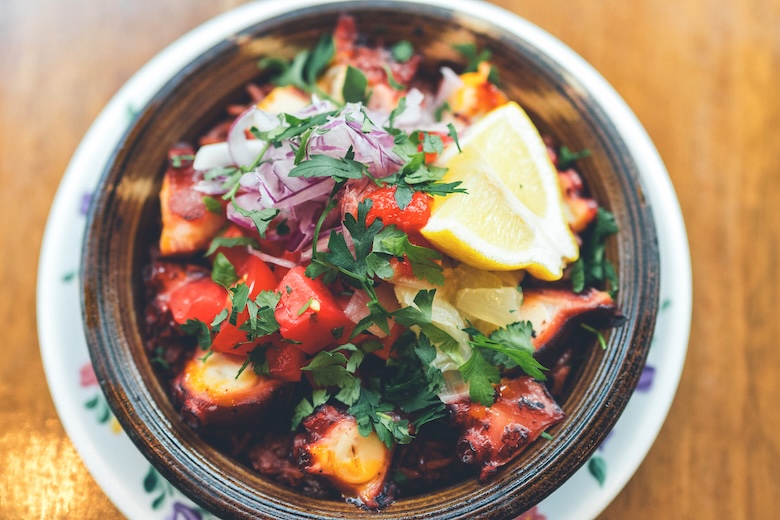CATEGORY
AREA

2025.09.29
A Restaurant Where You Can Experience Portuguese Food Culture in Tokyo
 Nearest Station
Nearest Station
Cristiano's is a restaurant that brings Portuguese food culture to the back alleys of Okushibu. The restaurant offers a variety of dishes with local flavors, recreated with local recipes. The restaurant is decorated with gallo (black rooster) objects purchased locally by the owner, allowing diners to experience Portuguese culture through all five senses. More than 500 bottles of wine are available at any given time, including many brands that are difficult to find in Japan. This popular restaurant is recommended by food connoisseurs in Japan and abroad as "Cristiano's when you go to Tokyo.
Marked by a red door and the Portuguese flag, “Cristiano’s” invites guests into a space filled with symbolic galo figurines—emblems of luck and truth—as well as traditional tiles the owner brought back from Portugal. The walls also feature large rooster illustrations by artist Kida Oikawa, adding to the exotic charm. The interior evokes the feel of a Portuguese neighborhood eatery—warm, homey, and culturally immersive. It’s perfect for solo drinks or casual meals with friends. With comforting food and a welcoming atmosphere, “Cristiano’s” is known as a restaurant that always requires reservations.
The dishes at "Cristiano's" are traditional dishes made with seafood, meat, and rice, recreated with local recipes and devised to be close to the Japanese palate. The first dish to try is the "homemade bacalhau croquette" (830 yen). The homemade bacalhau, a dried codfish called "national food" in Portugal, is used for the croquettes, and when deep-fried, the outside is fragrant and the inside is moist. In addition to the plain version, there are three other varieties to choose from: "Kuro," which is kneaded with squid ink, and "Kiilo," which is flavored with curry. Other popular Portuguese dishes include "Stir-fried pork and clams in Alentejo style" and "Portuguese-style rice cooked with Amakusa octopus".
Our wine list features over 500 selections at all times, including many rare labels seldom found in Japan.Among them, “Vinho Verde” stands out—a lightly sparkling wine with refreshing acidity that pairs exceptionally well with Portuguese cuisine. We also serve it in “Vinho Pene” glasses, cup-shaped vessels that recreate the traditional Portuguese farming practice of drinking wine from rice bowls.
The information contained this article was correct as of 09/29/2025 (the time of publication)